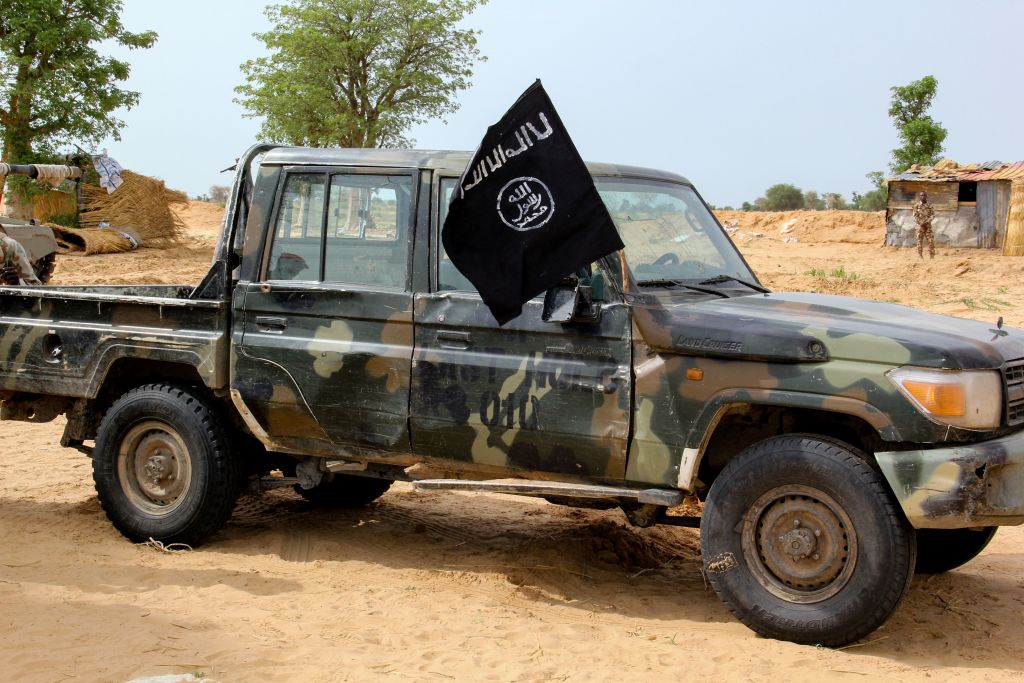ADF STAFF
Recent media campaigns by the Islamic State group have encouraged fighters to pursue hijra, or migration, to Africa and foster extremism.
Experts predict more terrorism on the continent.
Since the Islamic State terrorist group’s defeat in Iraq and Syria, the organization has shown an intention to revive itself through multiple branches in Africa.
If the group’s promotion of Africa as a destination for extremism “proves to be sustained and successful, the group may continue to build its ranks, alliances, and reach in the region, which could in turn result in more violence and pose a threat to any form of foreign presence,” threat intelligence company Flashpoint wrote in a July 18 blog post.
“And if this push is not contained soon, the group is likely to continue to gain more physical territory and control, enabling it to reach closer to major targets, such as government, commercial, and/or nonprofit assets operating in Africa.”
The Islamic State group violent extremist organization got its initial foothold on the continent in Nigeria in 2015 when Boko Haram leader Abubakar Shekau pledged allegiance to the group. Since then, it has established affiliates in the Sahel, Mozambique and the Democratic Republic of the Congo.
Violence and insecurity are rising in those regions and threatening to spread.
Nearly half of all 2021 deaths attributed to the Islamic State group worldwide occurred in Sub-Saharan Africa, according to the 2022 Global Terrorism Index.
“We remain clear on the state of the [Islamic State group’s] threat, which has not diminished,” Moroccan Minister of Foreign Affairs Nasser Bourita said during a May 11 meeting of the Global Coalition to Defeat ISIS, held in Marrakesh.
“Today, 27 terrorist entities based in Africa are registered on the U.N. Security Council sanction list. This is a clear indicator of their connections to major global terrorist groups.”
With about 5,000 fighters, the Islamic State West Africa Province (ISWAP) is the largest affiliate. It operates in Africa’s Lake Chad Basin, waging war against Cameroon, Chad, Niger and Nigeria.
In Nigeria, the Islamic State group has claimed responsibility for 182 attacks between January 1 and July 6, 2022, according to Flashpoint. The group claimed 44 attacks over the same time period in 2021.
“These attacks demonstrate [the violent extremist group’s] capabilities in Africa, with notable levels of sophistication in terms of target planning and execution — or at least an adept ability to exploit local grievances and vulnerabilities,” Flashpoint said.
In recent years, the Islamic State group has renamed some of its African affiliates. Experts suggest it’s a rebranding effort aimed at giving the appearance of expansion. It also has coincided with an increase in African attacks claimed on the terrorist organization’s media platforms.
In May 2022, the group operating in Mozambique’s northeastern province of Cabo Delgado, a terrorism hot spot since 2017, became known as Islamic State-Mozambique after previously being part of the Islamic State Central Africa Province (ISCAP).
The Sahel, which is considered the epicenter of terrorism in West Africa, also became a separate Islamic State group province.
“Islamic State in the Greater Sahara (ISGS) was renamed Wilayat al-Sahel (IS-Sahel) in March, and with Mozambique it seems like a broader reorganization,” Bridgeway Foundation senior analyst Ryan O’Farrell told the Mozambique-based Zitamar news website.
“ISGS was incorporated into ISWAP in March 2019, about the same time ISCAP was announced, so I don’t think the two new wilayat are a coincidence. Another possibility is that with the new caliph, they need to look like they are continuing to expand, so adding two new provinces might be a way to do that.”
In Cabo Delgado, battlefield losses to a regional intervention force have eroded Islamic State-Mozambique’s manpower from a reported high of 3,000 militants to between 1,200 and 600.
The militants, however, have shown resilience in continuing to launch attacks and adapting new tactics. In recent months, they have expanded their reach by attacking and recruiting in neighboring provinces.
ISCAP now refers solely to the rebel group in the eastern DRC and Uganda, previously known as the Allied Democratic Forces. In April, the Islamic State group released a video showing ISCAP leader Musa Baluku renewing his pledge to IS group’s new caliph, Abu al-Hassan al-Hashimi al-Quraishi.
O’Farrell says the video is noteworthy for its IS imagery and its use of Swahili instead of Arabic.
“The production of hyper-violent propaganda releases is a clear homage to Islamic State productions at the height of its power in Iraq and Syria, while the frequent wearing of kanzus [white tunics] by [Allied Democratic Forces] fighters in media releases may be another aesthetic signal of [its] attempts to market itself as a regionally oriented representative of the Islamic State’s global brand,” O’Farrell wrote in an April 6 blog post for the Foundation for Defense of Democracies’ Long War Journal website.
“The enthusiastic adoption of Swahili-language productions for or on behalf of the Islamic State provides further demonstration of how the [Allied Democratic Forces’] internal identity is now that of the Islamic State’s.”

